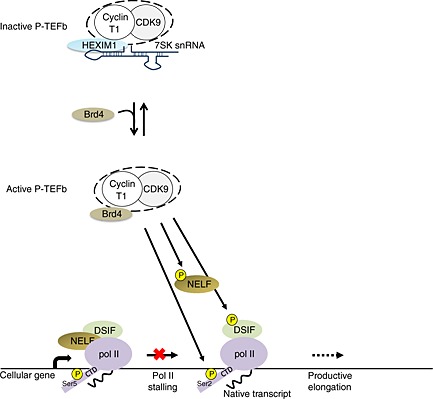Figure 1.

The role of positive transcription elongation factor b (P‐TEFb) in a regulation of pol II transcription. P‐TEFb, comprising cyclin‐dependent kinase 9 (CDK9) and a cyclin T1 subunit, exists in a catalytically inactive small nuclear ribonucleic particle with 7SK snRNA and HEXIM1. Active P‐TEFb is bound instead to bromodomain‐containing protein 4 (Brd4) and stimulates elongation through phosphorylation of the pol II carboxyl‐terminal domain (CTD) on Ser2 and two negative transcription elongation factors: DRB sensitivity‐inducing factor (DSIF) and negative elongation factor (NELF). Phosphorylation converts DSIF from a repressor to an activator, whereas phosphorylated NELF leaves the elongation complex.
